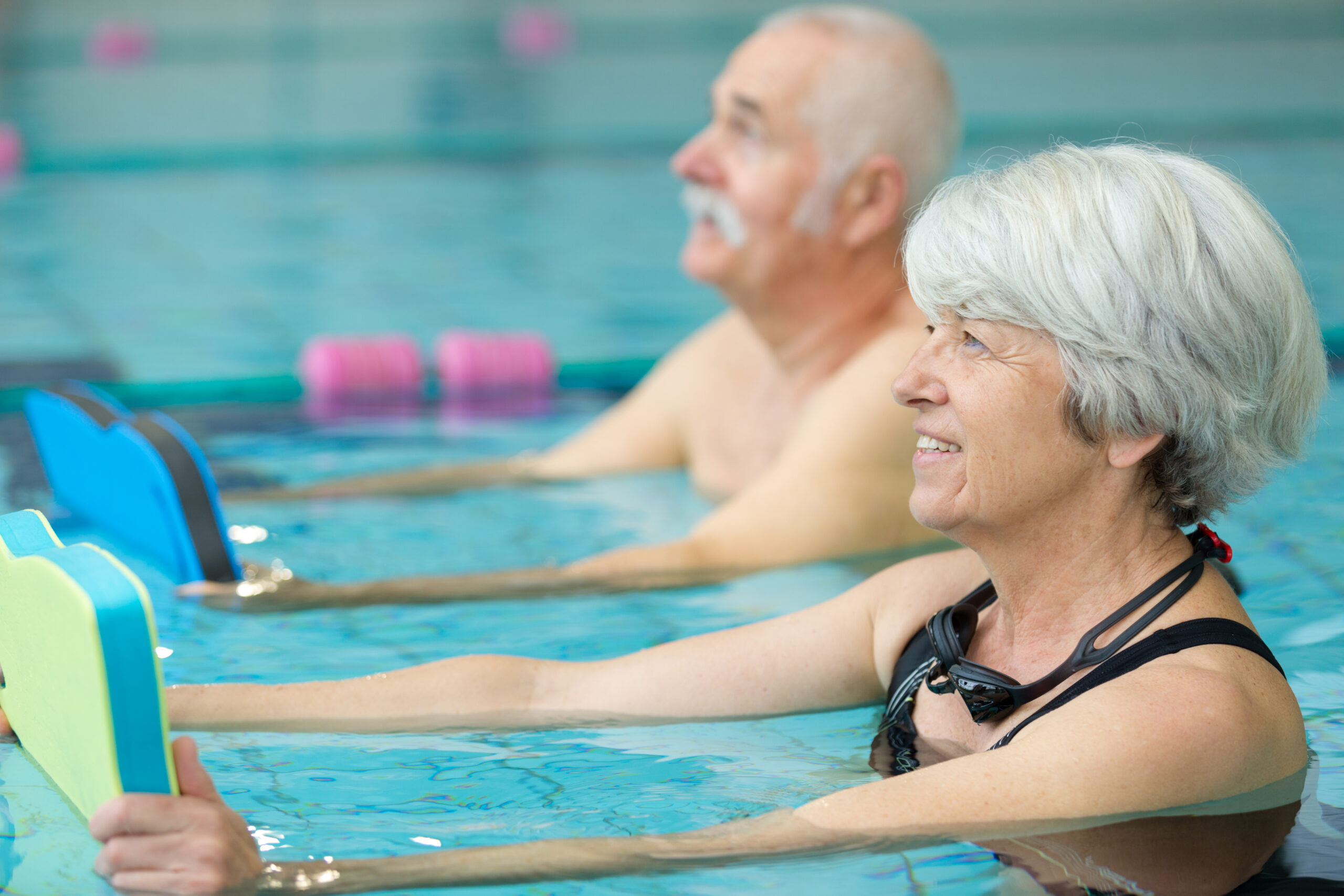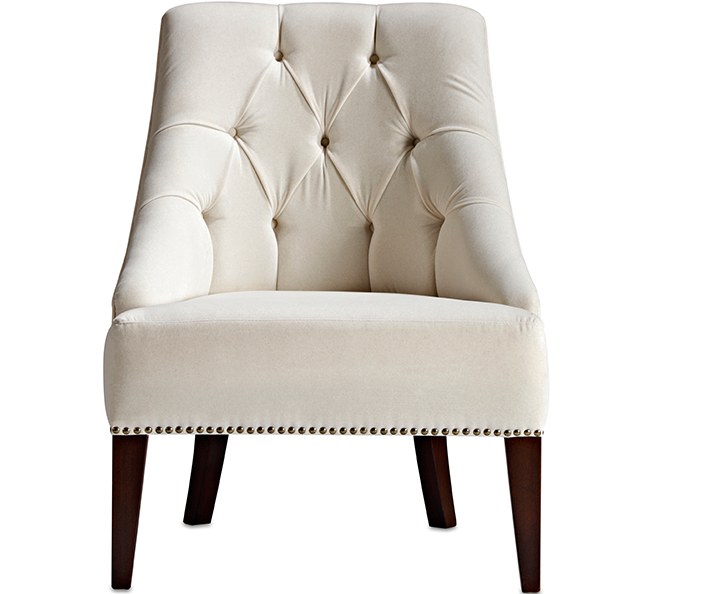At our vibrant assisted living community in Saint Petersburg, Florida, we highly encourage our residents to engage in regular exercise for both physical and mental health. But for seniors, high-impact activities like running or weight lifting carry higher risks of injury over time. That’s why our community offers a beautifully landscaped heated, outdoor pool perfect for low-impact aquatic workouts that can be tailored to all different fitness levels. Read on to learn why water aerobics and swimming are such great options for seniors seeking to improve strength, mobility, balance and overall well being.
Gentle on Joints
For seniors, aquatic exercise is often preferred over traditional gym routines since water’s buoyancy effect reduces strain on joints, ligaments and muscles. With less pressure and impact, there is significantly lower risk of injury or aggravation of pre-existing conditions like arthritis or osteoporosis during water-based workouts. Those recovering from surgeries or managing chronic pain can benefit greatly from the cushioning nature of water. And for the average senior simply looking to stay active safely, the aquatic environment makes working out gentle on the body. Whether walking laps or doing aerobics in shallow or deep water, the smooth resistance water provides allows for great conditioning without wear and tear on sensitive joints.
Builds Cardiovascular Strength
The dense properties of water require exertion to move through, providing excellent resistance training to build cardiovascular endurance. During aqua aerobics classes, our residents do conditioning sequences involving leg kicks, arm pushes/pulls, and core twists leading to elevated heart rate levels similar to land-based interval training. But unlike running on hard pavement, the hydraulic pressure stimulates circulation while loosening tense muscles. Sessions finish by walking laps around the pool to sustain elevated heart rates while allowing joints to cool down after more intense moves. Over time, water aerobics demonstrably boost stamina, which is essential for balancing, coordination and reducing risks of falls.
Improves Muscle Tone
Anyone who has tried jogging or treading water in a pool knows firsthand how the water’s natural resistance tones muscles quickly. Aquatic workouts employ various equipment like barbells, resistance bands and pool noodles to immerse larger muscle groups while performing intentional movements. The consistent friction strengthens muscle fibers efficiently without taxing joints or the nervous system as traditional weights might. For seniors concerned about loss of muscle mass due to aging (sarcopenia), water activities can help maintain and even rebuild lean muscle tissue through healthy resistance. Residents at Westminster Shores can feel their bodies getting stronger with each pool visit!
Enhances Motor Skills
The unique characteristics of an aquatic environment require engaging multiple muscle groups at once to propel through water laterally, vertically and rotationally. Simply walking forward engages core and leg strength not triggered on land. Adding intentional arm and leg actions works additional upper and lower body muscle chains while keeping the heart rate elevated. These multi-dimensional, multi-level movements simultaneously challenge motor coordination skills keeping both mind and body sharp. The instability of water also triggers reflexes and balance. All these elements combined enhance body awareness, reaction time, proprioception and overall functionality for improved mobility both in and out of the pool.
Alleviates Impact of Gravity
For many seniors, years of gravitational pressure on the skeletal structure often lead to compressed joints or spine issues manifesting as limited mobility. But when submerged in water, the body experiences an immediate decrease in gravitational pull equal to the percentage of body mass below water level. So if one is immersed up to the neck, over 75% of Earth’s gravity dissipates – suddenly stairs, reaching overhead or looking downwards feel more manageable. This relieving sensation allows for gentle reconditioning of muscles and connective tissues gradually. Soon joints compressed after decades of bearing weight smoothly regain flexibility and range of motion once impossible. Just floating stretches tight ligaments while gentle kicks and arm circles mobilize limbs often stiff from disuse or aging. The gradual reintroduction of movement out of water then feels less strained or fatiguing.
Lowers Stress & Promotes Relaxation
Let’s not forget the mental health benefits of aquatic activities as well! Simply immersing chest-deep in water elicits immediate physiological reactions: heart rate drops, blood pressure decreases and muscles relax instinctively. Add in rhythmic breathing while doing gentle water exercises and the parasympathetic nervous system activates even more to signal deep calmness. Peaceful aquatic environments lower stress hormone levels and clear cortisol buildup while endorphin and dopamine levels increase. The sensation of weightlessness many enjoy while floating releases muscle tension held from everyday anxieties. Relaxed joints gain greater range allowing tense areas like the back or neck to fully lengthen. All this translates to better sleep, improved mood, clearer thinking and more energy outside pool time. What’s not to love?
Social & Recreational Outlet
Consistent aquatic exercise serves functional fitness goals but also provides a meaningful social outlet important for emotional health. Group water aerobics classes allow residents to interact with peers during an enjoyable activity promoting camaraderie. Classes conclude by mingling around the pool deck where many members enjoy chatting about their workout accomplishments. Since exercise adherence relies partly on enjoyment, the recreational environment lends itself to consistency compared to solitary gym routines. And as members progress together over months and years, the aquatic center often becomes a second community where meaningful relationships enrich overall wellbeing. Beyond formal programming, residents enjoy casual pool time sunbathing on deck, walking laps at their own pace or simply relaxing poolside. Solo or shared, activities centered around the iconic Florida staple of palm-tree lined swimming pools breezing with coastal air foster a sense of health, happiness and endless summer.
Aquatic Exercise is for Every Body
The buoyancy and cushioning nature of water makes aquatic activities accessible at any age or fitness level. Those who previously avoided exercise due to specific limitations like obesity, arthritis, fibromyalgia or other mobility issues often excel with aquatic routines better suited for their needs. Our shallow-depth classes allow vertical movements benefiting balance and circulation. Deep water workouts let residents float freely while building core control. Those recovering from illness or surgery utilize gentle water resistance to rebuild strength before attempting land exercises. Regardless of current abilities, consistent aquatic exercise safely restores function often lost through aging, disuse or chronic conditions. Success stories teach us water workouts truly are for every body – it just takes a little creativity and commitment.
Aquatic exercise clearly delivers multifaceted wellness benefits tailored beautifully for aging adults. From building strength and balance to enhancing mood, the advantages go beyond head to toe conditioning – they promote whole being revitalization. If you are interested to learn more about our assisted living programming here at Westminster Shores, call us anytime. Let’s chat about how water workouts can improve quality of life as we age gracefully together by the bay!






